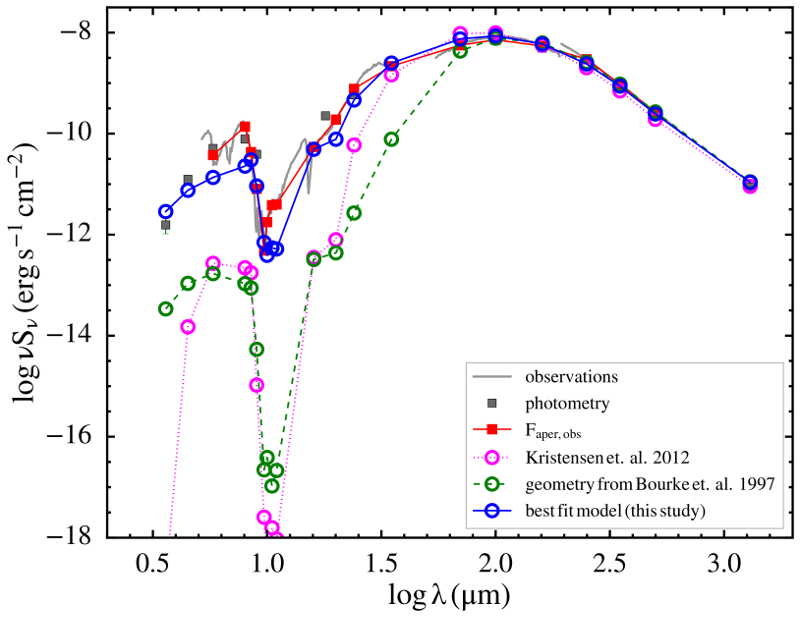| EPoS Contribution |
|
The Class 0 Protostar BHR71: Herschel Observations and Dust Continuum Models
Yao-Lun Yang UT-Austin, Austin, US | |
| We performed an analysis of the Herschel spectra of BHR71, an embedded Class 0 protostar, with 3-D dust radiative transfer simulation to fit the spectral energy distribution (SED) observed by Spitzer and Herschel. The model incorporates a rotating, collapsing envelope with a static outer envelope, as well as a bipolar outflow cavity and a flared disk. We find that the density profile of the cavity with a constant-density inner region followed by a r-2 decrease is required to reproduce the emission between 20 μm to 50 μm. Our parameter study shows that the SED observed by Herschel (50 μm to 670 μm) is more sensitive to the envelope properties, while the SED observed by Spitzer (5 μm to 35 μm) is more sensitive to the outflow cavity properties. The effect of the disk is not significant. The central luminosity in the best-fit model shows a hint of a lower accretion rate than the rate derived from the collapse model, the mass infall rate in the envelope. A chi-square analysis of the age shows that the chi-square experiences a slope change instead of a local minimum around an age of 10000 years, indicating BHR71 is an extremely young protostar. Our best-fit model also suggests a total dust mass of 0.22 solar mass and an inclination angle of 40 degrees, while the observation of CO outflow suggests an inclination angle of 84 degrees. | |
 | |
| Caption: Simulated SEDs of our best fit model (solid blue), the modified model from Kristensen et al. (2012) (dotted magenta), and our best-fit model with the geometry from Bourke et al. (1997) (dashed green). The observations including spectra and photometry are shown in gray. The simulated SEDs and observed spectra are both extracted with the aperture sizes used in the observation (open blue circles and red squares). | |
| Collaborators: N. Evans, UT-Austin, US J. Green, STScI, US M. Dunham, CfA, US J. Jorgensen, NBI, DK |
Suggested Session:
Cores and Collapse |

